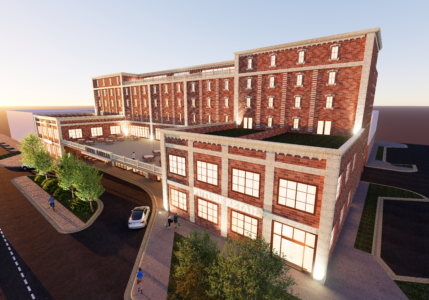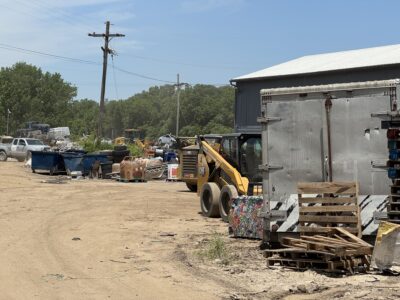
City sales tax collections good, but taxpayers should still expect to pay more

photo by: Mike Yoder
Lawrence City Hall, 6 E. Sixth St., Thursday, July 7, 2016
The latest report is out, and Lawrence sales tax collections continue to be good — but not good enough in one key regard. They aren’t good enough to avoid a property tax increase from City Hall.
The city recently got its July sales tax check from the Kansas Department of Revenue. It showed it collected 2.8 percent more in sales tax revenue than it did during the same period a year ago. Monthly totals vary wildly, so the more important figure is the year-to-date calculation. Through the first seven months of 2017, the city has collected 3 percent more in sales tax revenue than during the first seven months of 2016.
That’s not bad. It is about twice the rate of inflation. But, it is not as good as it has been in past years. Sales tax collections in 2016 grew by 5.5 percent. The slowdown comes at an inopportune time for Lawrence taxpayers. In a roundabout way, it is one of the reasons Lawrence taxpayers are set to see a 1.25 mill increase for the 2018 budget.
Here’s the quick version of the city’s proposed 2018 budget: In May city staff recommended a budget with a 1.25 mill levy increase to help pay for a new police headquarters building. The city built the budget with the idea that sales taxes would grow by 4 percent but property values would only grow by 2 percent. In June, the city got word from the county that the city’s property tax base actually grew by 6 percent. That meant if the city made no other changes to its budget, it would get an extra $1.4 million in property tax revenues that it wasn’t expecting.
In the past, this may have been good news for taxpayers. City officials would take some of that $1.4 million in unexpected revenue and use it to reduce the 1.25 mill levy increase. Here’s an example of what happened this year. Of the $1.4 million total, about $948,000 of it goes into the city’s general operating fund. The city took a second look at its proposed budget for the general operating fund and decided that some other revenues projections needed to be adjusted downward by $485,000. On the expense side, it decided some projections needed to be adjusted upward by $485,000. The result: That $948,000 in unexpected revenue is all gone, and then some.
But back to the sales tax issue. The biggest change the city made from May to June is it reduced its projections for sales tax collections in 2018. That one change wiped out $590,000 of the unexpected money. It probably was a reasonable change. The city was budgeting to see 4 percent sales tax growth in 2018. Sales tax collections in 2017 may not even grow 4 percent, so it would be unwise to assume they will in 2018.
But there is another sales tax number to pay attention to. How much does the city collect in sales taxes compared with how much it budgeted to collect? For years the city has consistently underestimated how much money it will collect in sales taxes. The result is the city ends up with money that it hasn’t budgeted to spend at the end of the year.
Two key questions: How much money, and where does that money go? The how much isn’t really easy to figure out. But after looking at several line items of several years worth of budgets, I’m comfortable estimating the city has collected at least $3.5 million more in sales and use tax revenues from 2012 to 2016 than what it budgeted to collect. The number is almost certain to go up in 2017. Current projections have the expected excess at a little more than $1.5 million for 2017.
Where the money goes is easier to answer. It basically goes into a series of rainy-day accounts called “fund balances.” They are basically used to cover unexpected expenses, unexpected revenue declines or calamity.
It is good to have an account like that, but it also would be good to have a discussion about whether it needs to continue to be funded by excess sales tax revenues. Sales tax revenues are tough to predict, but when the city has a sales tax prediction fall short, it often results in residents paying more in property taxes than they really need to.
But what if the city kept all of its excess sales tax collections from past years in a separate fund? It could be called the excess sales tax fund. The city would still have to make sales tax projections, but the stakes would be lower if the projections are wrong. If there is a year that taxes come in below the projection, the city pulls money out of the excess sales tax fund. If it comes in above the projections, the fund grows. It would have been helpful this year. Remember that $550,000 last-minute reduction in sales tax projections? Such a fund could cover it, if it even materializes.
As for the city’s rainy-day fund, that would still exist. The general operating fund balance has more than $15 million in it, and it can grow in ways that don’t involve excess sales tax revenues.
Certainly, flaws can be found in this type of system too. But I believe taxpayers — especially those who don’t like property taxes — are finding flaws with the current system. Sales tax collections have been really good for a lot of years in a row now, yet the property tax rate continues to rise. This year both sales tax collections and property values are up, yet the property tax is set to rise.
From 2012 to 2017, a time when sales tax collections have come in millions over budget, the city’s property tax rate has grown from 29.5 mills to 33.2 mills upon approval of this budget. Everything else being equal, that is a 12.5 percent increase in taxes, which isn’t that bad, until you look at one other statistic: incomes.
In 2012, the federal Housing and Urban Development department estimated the median family income in Douglas County at $71,500. In 2017, the estimate is $68,500.
That’s perhaps the most important number for budget-makers to keep in mind.







